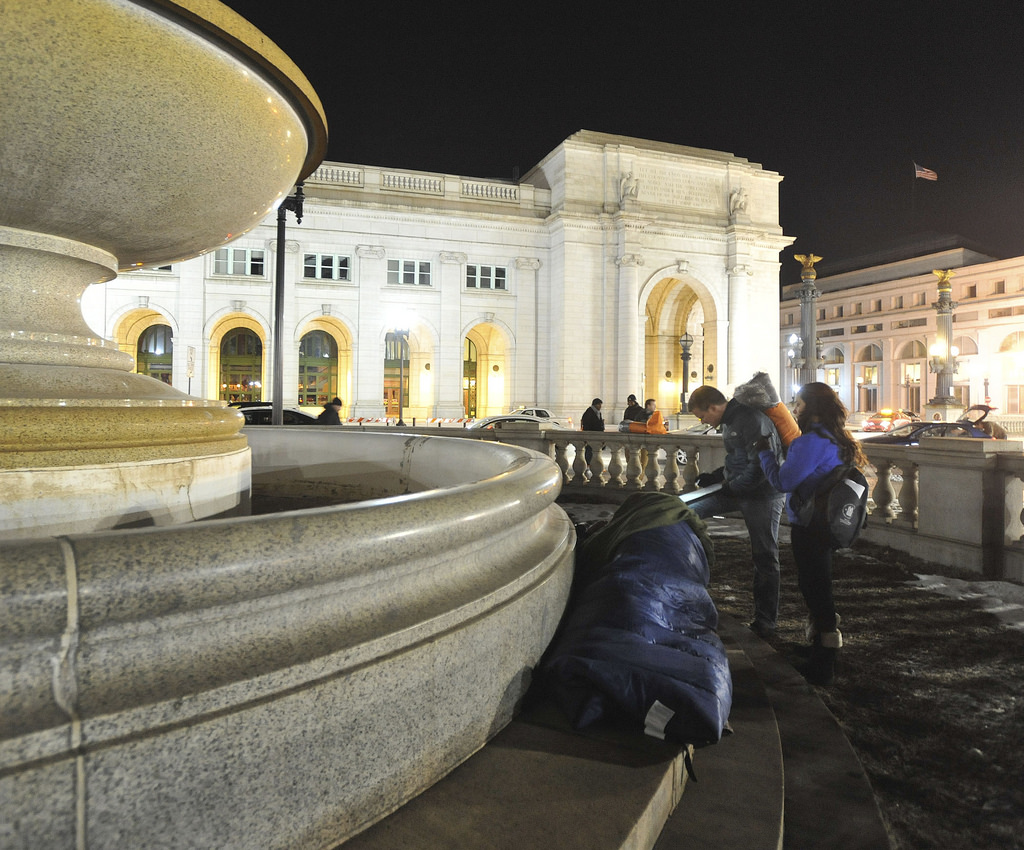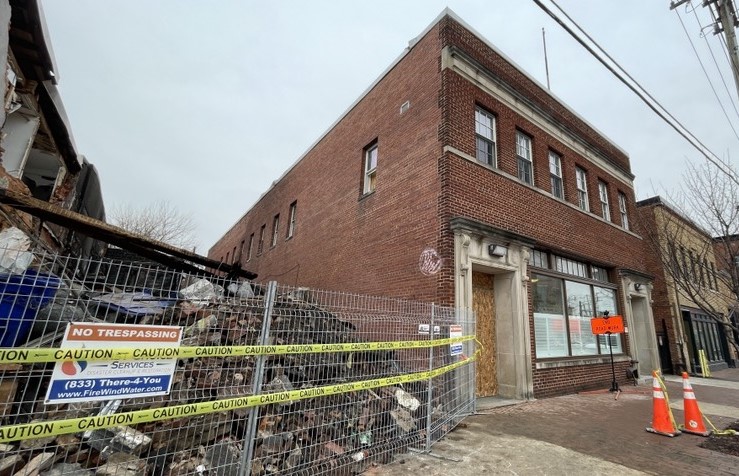Tom Goss approached a blue tarp-covered mound near Dupont Circle expecting to know who he would find within. Goss, development director of a local homeless ministry near Dupont, said he often sees a woman camped in that spot outside the PNC bank on the sidewalk between Massachusetts and Connecticut avenue. However, on this night, Jan. 29, the night of the city’s 14th annual Point-In-Time (PIT) Homeless Count, Goss, an experienced volunteer for the survey found someone different in the spot.
A man who introduced himself as Jim was wrapped in the blue tarp. And though the temperature danced around the single digits, and chilling winds numbed any exposed skin, Jim assured Goss he was keeping warm wrapped in two sleeping bags and a down comforter underneath his improvised wind-breaker.
Then Goss began to ask him the questions that are standard for the census effort, which is aimed at learning more about the city’s homeless population. How long had he been on the streets? What would he call the main cause of his sleeping on the streets? Did he have any medical conditions? Had he served in the armed forces?
Across the city, the same questions were being asked by other Point in Time volunteers that surveyed other unsheltered people spending the night in alleys, sidewalks and parks.
Hundreds came together for this year’s effort. The sheer number of volunteers gathered in the National City Christian Church in preparation for the night’s census reflected the immensity of the task; capturing a snapshot of homelessness in the District that will help policymakers and advocates better understand the needs of the city’s homeless men, women and children and the causes underlying their homelessness. Last year’s count found a total of 6,865 homeless people living in city shelters and transitional housing programs, as well as sleeping out in the cold.
At this year’s count, D.C. Mayor Vincent Gray and Secretary of Veterans Affairs (VA) Eric Shinseki spoke about the importance of the count to the national campaign to end all types of homelessness, including homelessness among veterans.
In 2009, Shinseki unveiled a five-year plan to end veterans’ homelessness by 2015. A key part of the plan partnered a Department of Housing and Urban Development housing voucher program with VA case management services to create a veteran-specific housing program.
Nationally, the plan has had an impact. The VA reports a 17.2 percent decrease in veteran homelessness since the five-year plan was unveiled. The HUD and VA Supporting Housing program (HUD-VASH) has been called a big part of that success, and VA reports that 58,140 vouchers have been awarded and 43,371 formerly homeless veterans are currently in homes of their own because of HUD-VASH.
Mayor Vincent Gray offered congratulations to the mayors of Salt Lake City and Phoenix for their successful campaigns against veteran chronic homelessness. Officials in Phoenix announced theirs was the first US city to end its chronic veteran homelessness in December 2013. A month later, Salt Lake City officials announced that city also had ended veteran homelessness.
Both cities’ efforts were aided by the HUD-VASH.
Tackling homelessness means making the size and scope of homelessness visible, and that is the importance of the PIT count, the mayor said.
“Maybe the day will come in the not-so-distant future when we won’t have to count anyone except if we go to their homes to make sure they are OK,” the mayor said.
Even if there is an absence of homelessness in an area, that absence tell you something, Goss said, as he walked Dupont’s streets later that night.
Goss checked the bushes and wooded areas over-looking the Rock Creek and Potomac parkway near the Q street bridge, citing those areas as common sleeping locations for the area’s homeless.
As he descended the wooden steps into Rock Creek park after the P street bridge, streetlights were left behind and the scene quickly became unnerving. Under the bridge, there was just enough light to make out graffiti on the walls and the only sound was Rock Creek’s chilly waters.
Nobody was sleeping under the bridge that night and Goss’s route down Bancroft to Massachusetts Ave, then south to P St. NW was uneventful. He arrived at Dupont Circle a little before midnight.
Jim was the first homeless person Goss encountered that night. Before living on the street he stayed with family in the DC area. When asked about medical conditions, Jim said he couldn’t complain.
“I’ve got male baldness,” he joked, “and it’s terminal.”
Goss finished his route at St. Magaret’s Episcopal church at the end of the night. Experience tells him that on frigid nights like this, there aren’t many people sleeping on the streets.
“Judging from the numbers we get from our breakfast program on a month-to-month basis, the numbers definitely go up in the summertime,” he said.
Dupont is a good area for panhandling, Goss said, one that draws homeless people during the day. As the commuters working in the area’s office buildings thin out in the evening, the homeless commute out of the neighborhood as well.
The results of the city and regional count will be released in the spring by the Metropolitan Washington Council of Government. The Community Partnership for the Prevention of Homelessness, which manages the local count, will also distribute a District-specific report on its website and Facebook page.








